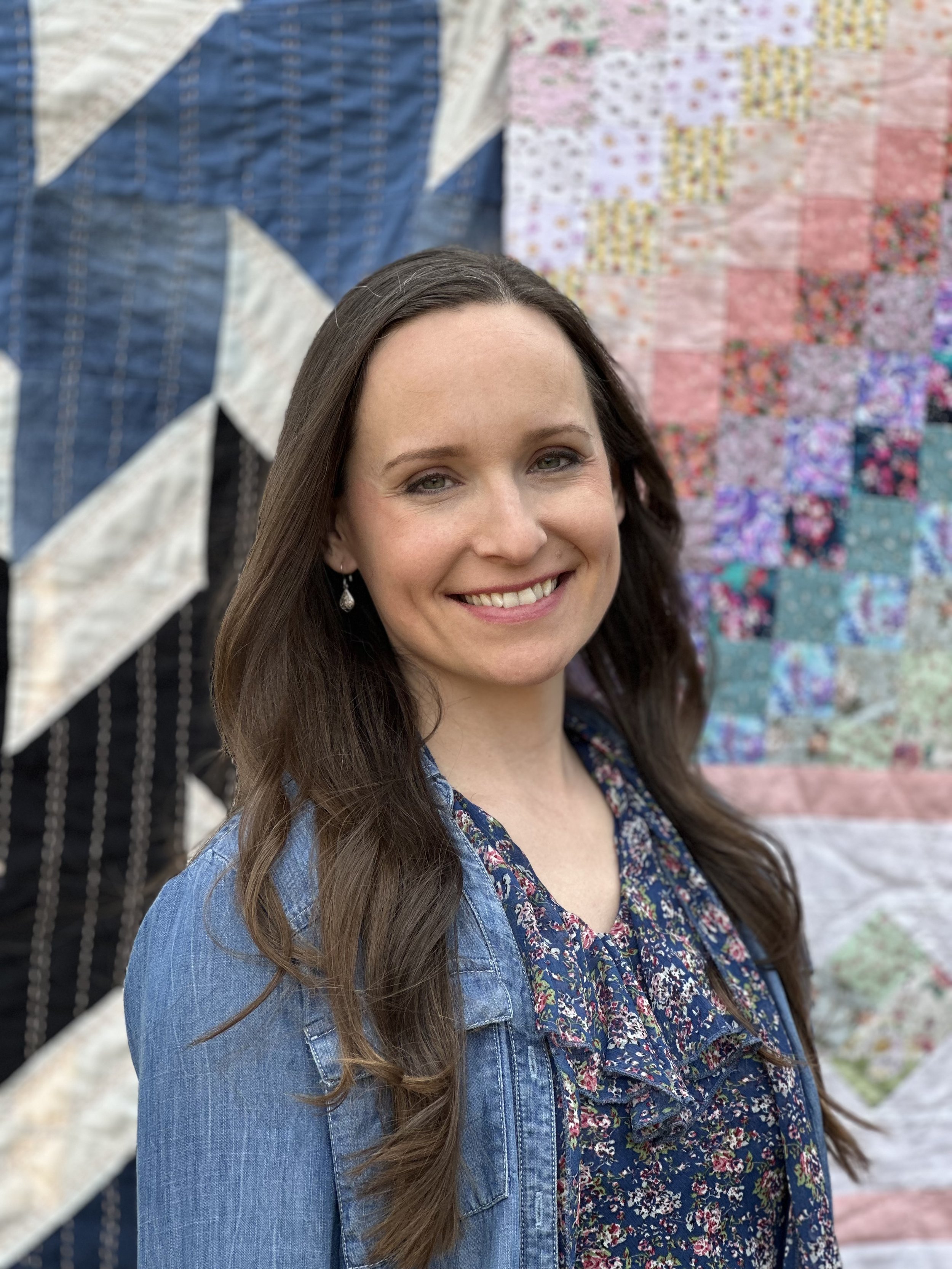Pull Up a Chair:
An Artistic Journey Through Downtown Leeds
Taryn Handal
Taryn Handal
Artist
Taryn has been an artist all her life. She began creating in grade school and just couldn’t stop! She has worked with many creative mediums, such as sketching, painting, graphic design, paper collage, and fabrics. Quilting has become a new favorite, and learning the rich history of textile creation has opened new passions for Taryn. The tradition of textile-making has been around for centuries and centuries, yet with the convenience of store-bought goods, the art is dying. Taryn hopes that this art continues and has recently began a local community group for needle arts called Sip ‘N’ Stitch. She hopes to see more local sewists, knitters, crocheters, and the like, band together and share the arts with the newer generations. Making and creating is a fantastic way to heal, grow, and connect with others!
Taryn’s concept for this rocking chair stems from her passion for quilting and its history. Her hope is to represent three people groups that inhabited Leeds around the time of its founding in the 1880’s. On the left side of the chair lays a representation of a Muscogee (Creek) Native American woven blanket. The Creeks were among the first Native Americans to occupy what would become Leeds. Weaving was a common art form among this people group, using animal furs and plant fibers dyed rich reds, blacks, golds, and blues with natural resources. Many Muscogee moved West after the Treaty of Washington in 1826 and the rest were forcefully removed with the Indian Removal Act of 1832 (“Trail of Tears”). Down the center of the chair lays a traditionally pieced quilt with block patterns thought to be used at the time of Leeds’ founding in the 1880s. Intricate blocks were created using store-bought fabric or repurposed fabric and traditional tools. Fabrics were made locally (such as in cotton mills as close as Pell City) or imported from Europe, and some people repurposed cloth flour and produce sacks. Block patterns usually represented specific concepts, such as “The Queen‘s Pride,” or objects in life, such as “Baskets of Flowers,” (“Classic Quilt Blocks” by Susan Winter Mills, Dover Publications, 1989). Finally on the right side of the chair lays a representation of African-American quilting, known for its “freestyle” approach, as many of the pieces were made without traditional tools or store-bought fabrics. Pieces may have lacked uniformity or precise lines, but patterns represented stories, scenery, or objects from the rich culture. This blanket is a representation of a quilt called “Stacked Bricks,” made by Nettie Young of the famed Gee’s Bend Quilters of South Alabama in 1928.
Taryn was raised in Argo, Alabama, and has loved living in Leeds since 2010 with her husband, Herbie, and her three children. She enjoys using her creativity and love for learning in her job as an RN Clinical Educator. She hopes to one day open a small business where she can teach art and support crafting within her community full-time.



